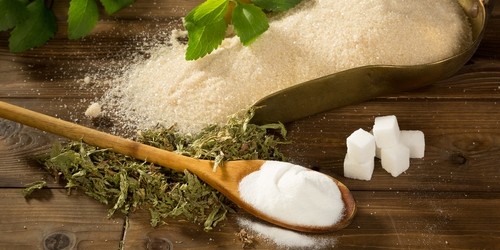Tomorrow’s doctors could just as likely hand over a recipe as a prescription.
As our health care system increasingly acknowledges the connection between nutrition and disease, an innovative partnership between two Colorado heavyweights—Johnson & Wales University and the University of Colorado (CU) School of Medicine—is already on that path, providing medical students surprising new tools for patient care.
The Culinary Nutrition Program, an eight-week elective class for first- and second-year medical students, offers a playbook (or rather cookbook) for treating certain diseases with food. Just as importantly, the program, relying on a curriculum developed by The Goldring Center for Culinary Medicine at Tulane University, teaches the medical students how to cook.
“The aim is to provide future physicians with a stronger foundation to counsel patients on health and nutrition,” says Marleen Swanson, a dietitian and department chair in culinary nutrition at the College of Culinary Arts at Johnson & Wales University.
But in order to deliver this information, the medical students needed exposure to a different kind of lab: the professional kitchens at Johnson & Wales. “We couldn’t have done this without Johnson & Wales,” says Mark Deutchman, M.D., a professor in the Department of Family Medicine at CU who taught the medical portion of the first Culinary Nutrition Program, offered in the spring of 2015.
Friday-evening classes were held in the Johnson & Wales kitchens. Each class began with a medical case-study lecture on health problems such as heart disease, obesity and high blood pressure. Next, Swanson discussed nutrition information related to the topic and selected recipes with ingredients to treat the problem. Then she and her senior culinary students presented a hands-on cooking lesson to the medical students. After preparing the recipes and discussing patient case studies, all of the students and instructors sat down together and enjoyed their meal.
“That was the best part—having the med students see how much knowledge and expertise the culinary students had to contribute,” Deutchman says. “Then the culinary students were able to hear how the med students looked at the situation.”
The program started in Colorado thanks to the persistence of a former CU medical student, Meredith Evans, M.D. While she was in school, Evans’ mother passed along a magazine article highlighting the Tulane program and half-jokingly suggested her daughter start a similar program at CU.
“I grew up with parents who cooked amazing and healthy meals every night, and I developed my own love of cooking as I got older,” says Evans, who has presented medical information during the Friday-night classes. “This program seemed like a great way to combine my passions for cooking and medicine.”
According to Evans, medical students receive very little nutritional information during their studies. “I thought if we could provide students with hands-on experience in the kitchen while also teaching them about nutrition, then we would be improving the ability of future physicians to take care of all kinds of patients with diet-related illnesses, as well as provide preventive counseling for healthy patients.”
Evans brought the idea to her advisor, Dr. Deutchman, and eventually helped secure funding from her own network of friends and family. After a successful first run, CU is now investigating offering future classes.
The curriculum used in Colorado began development at Tulane in 2012 under chef-turned-physician Timothy Harlan, M.D. The Goldring Center for Culinary Medicine is the nation’s first dedicated teaching kitchen implemented at a medical school. CU is currently one of 15 medical schools across the country licensing the curriculum.
“There are a lot of things patients don’t understand,” says Harlan, executive director of The Goldring Center and a practicing internist. “They don’t go to the grocery store with a shopping list that says ‘one bottle monounsaturated fat and one box of complex carbohydrates.’ Our goal has been to translate that conversation so the physicians have those tools in their toolbox.”
It’s that philosophy that drove Evans, now a medical resident, to finalize her decision to practice family medicine.
“Even in the few weeks that I’ve been in residency so far, I’ve found that patients are hungry for this sort of advice from their doctors, and yet no one has really talked to them about it before,” she says. “I plan to use many of the things I learned in the culinary medicine class to help guide discussions with my patients in order to help them stay happy and healthy.”
Food for Athletes
When it comes to proper care and feeding of a competitive athlete, it takes more than a bottle of sports drink to fuel a winner. That’s why the team at Johnson & Wales created a curriculum addressing the need for highly skilled professionals to create performance-optimizing menus for professional athletes.
“What it really boils down to is a sports nutrition class with a culinary application that’s heavily rooted in science,” says chef Adam Sacks, chief instructor and sports nutritionist at Johnson & Wales. “We break down the science of sports nutrition as it applies to metabolically active individuals.”
That means these culinary students work in a lab, using the same tools found in pro sports teams’ training rooms to take athletes’ biometrics, including lactate threshold, blood work and carbon dioxide output.
The senior-level class prepares students to work with top-level sports teams such as USA Soccer, where Johnson & Wales grad Bryson Billapando serves as executive chef for the men’s national team. Billapando tries to keep his menus as natural and organic as possible, while keeping the meals intriguing to the athletes.
Without giving away his secrets, Billapando says he keeps the team in top form by avoiding peaks and valleys in blood sugar levels and relying on particular foods to help with anti-inflammatory responses. And since this is a team that travels the globe, Billapando is ever-conscious of working in strange kitchens with only the produce that’s available. “It’s not just preparing the players for the next game—it’s also about bringing them to the table as a team and always having a menu that makes them look forward to mealtime.”
Black Bean Quesadilla
Ingredients
- 1 green bell pepper, diced
- ½ onion, chopped
- 2 garlic cloves, minced
- 4 ounces cremini mushrooms, sliced
- 2 teaspoons ground cumin
- ½ teaspoon dried oregano
- ½ teaspoon salt
- Fresh black pepper to taste
- 2 teaspoons olive oil
- 1 can (15 ounces) black beans, rinsed, drained (reserve liquid)
- 2 tablespoons fresh cilantro, chopped
- 12 corn tortillas
- 6 tablespoons low-fat sharp cheese (such as cheddar or Monterey Jack), grated
Instructions
- Preheat oven to 400°.
- Toss peppers, onions, garlic and mushrooms with cumin, oregano, salt and pepper in a bowl.
- Heat oil in a sauté pan over medium heat. Add vegetable mixture. Cook until vegetables are soft, about 4 minutes, stirring often.
- Add beans and half of reserved bean liquid. Cook until slightly thickened, about 5 minutes. Remove from heat and stir in cilantro. Allow to cool slightly.
- Lay half of corn tortillas on flat surface; then top each with ¼–½ cup of mixture.
- Sprinkle top of mixture with 1 tablespoon of cheese blend on each tortilla; then top with another corn tortilla and press gently.
- Place quesadillas in a single layer on a lined baking sheet. Bake in oven until cheese is melted and outside is crisp, about 5–8 minutes.





Comments